
What images and impressions come to mind when you hear the word “Epcot?”
That probably depends on when you first visited.
For throngs of Walt Disney World guests in the 1980s, EPCOT Center was astounding. Vastly different from Disney’s other parks (which, at the time, were the three “castle” parks of Disneyland, Magic Kingdom, and Tokyo Disneyland), EPCOT Center was a place of sincere, grounded, intellectual wonder – a living example of optimistic futurism, corporate power, the emerging capabilities of the computer, and the chance to see distant countries... all in a pre-Internet world.
By the close of the next decade, “Epcot” meant something else. With the new millennium on the horizon, Epcot was looking squarely like a remnant from a bygone era. The architecture of the 1980s was unmistakably dated and Epcot’s once stunning line-up of dark rides was aging, too. None did much to reverse Epcot’s growing image as the “educational” Disney Park that kids dreaded "wasting" a day at.
Image: Disney
Disney fans often beg for a California Adventure-sized re-do, dismantling and re-building Epcot from the ground up. True to Disney form, Imagineers at the dawn of the new millennium were hard at work on that very possibility. Epcot was due for a total upgrade and a massive monetary influx that would’ve changed the park forever. PROJECT: GEMINI was a potentially game-changing reinvention planned for the park in the early 2000s... But would it have solved the park's persistant problems?
With the benefit of hindsight, we can both lament and cheer the concepts from this distinctly-early-2000s overlay that never came to be. Some of the elements of Project: Gemini found life at Epcot and elsewhere. A few are stellar ideas still worth exploring. Others, we're glad to have left behind. But either way, Epcot today would be a very different place if Project: Gemini had succeeded in its entirety. Let’s find out what could’ve been.
The lost city
To understand where Epcot is today (and why Project: Gemini needed designed at all), we have to consider the park’s origins. In 1982 when Epcot opened, it was sincerely groundbreaking.
In the design of Epcot, Imagineers looked to the forgotten “city of the future” Walt had designed – the Experimental Prototype Community of Tomorrow. E.P.C.O.T. then would’ve been just as its name implies: a real city where real people lived and worked. More than just an animator and designer, Walt was a dedicated futurist who sought to use his influence to design a living model for future cities. Smartly designed utilitarian urbanism, EPCOT would’ve featured elaborate mass transportation, ineffable urban planning, and energy efficiency; EPCOT would – in Walt’s imagination – inform the construction of every major city effort thereafter.
Of course, that EPCOT was never built. But the core concepts behind the park informed Imagineers in the construction of Walt Disney World’s second theme park. There, EPCOT Center would be Disney’s “permanent World’s Fair.”
But what exactly is a World’s Fair? It’s important here to take an aside. World’s Fairs (which still happen today, albeit with significantly less international reverence) are international expositions where countries and corporations come together to build massive pavilions showcasing technology and inspiring international cooperation. At least in modern times, World’s Fairs act as conduits between the people, corporations and countries. At 2015's World’s Fair in Milan, countries from around the world came together to build pavilions showcasing their country’s innovations, cuisine, and culture.
Walt’s World’s Fair
The history of the Walt Disney Company and its namesake are tied very specifically to the 1964 – 65 World’s Fair. It was at that fair – hosted in New York City – that Walt was called upon by four corporations to design attractions.
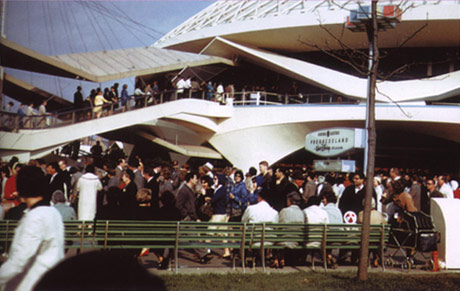
- For General Electric, Walt and company designed an innovative, revolving theater-in-the-round following one American family through time as the wonders of electricity (and specifically, of GE’s appliances) simplified and advanced their lives. This show, titled “Progressland,” would be relocated after its World’s Fair showing to a theater in Disneyland’s New Tomorrowland, where it would be retitled The Carousel of Progress.
- The state of Illinois – represented at the Fair with its own pavilion – had Walt construct a stunning and unimaginable Audio Animatronics figure that left crowds stunned. It, too, was relocated to Disneyland after the Fair, where it became Great Moments with Mr. Lincoln.
- For Pepsi-Cola, Imagineers designed a dark ride using the same ride system as the soon-to-be-built Pirates of the Caribbean. Rather than swashbucklers, the New York version was flanked by singing dolls and international wonders designed in the charming storybook pop-up style of Mary Blair. “it’s a small world” was also relocated to Disneyland after the Fair.
- Finally, Ford Motor Company had called on Walt to design an innovative attraction where guests could be whisked around elevated tracks around the pavilion’s exterior in motorless Ford cars before traveling into the pavilion for a dark ride through the age of dinosaurs. The technology behind the ride became New Tomorrowland’s Peoplemover while the dinosaurs were added to the Disneyland Railroad as the Primeval World diorama.
Bringing it all together
So Walt Disney World’s second theme park would be Disney’s own version of a World’s Fair. The story goes that two competing Imagineering factions had different ideas about what form Disney’s permanent Fair park should take. One argued for a World’s Fair wherein corporations sponsored large pavilions, each dedicated to a single topic of science or industry. Another faction believed Disney’s World’s Fair should draw on the cultural, international-representation of World’s Fairs, with each pavilion dedicated to a country showcasing its culture, customs, and cuisine. Both views were accurate depictions of real World’s Fairs, but they seemed diametrically opposed.
According to Disney folklore, it was one fortuitous day that the constructed scale models of the two theoretical parks were literally pushed together, building the familiar “figure-8” shape we know of Epcot – essentially, two very different parks united by their similarities.
And like a World’s Fair, the system seemed ingenious.
The futuristic pavilions of Future World would be sponsored by corporations interested in seeding their products and services into the experience. Those corporations would pay for the pavilion’s upkeep and – just as importantly – its updating. After all, no sponsoring company would want its name splashed across an outdated exhibit of retro-futuristic artifacts. In exchange for broadcasting their logos and products across the experience, corporations would foot the bill and keep their pavilions cutting-edge. It was a win-win situation.
It didn’t work. The systematic failure of Epcot’s sponsorship model might be directly to blame for the need for Project: Gemini. Read on…
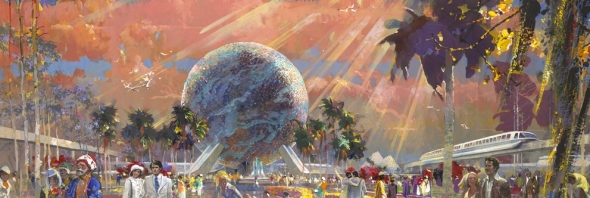
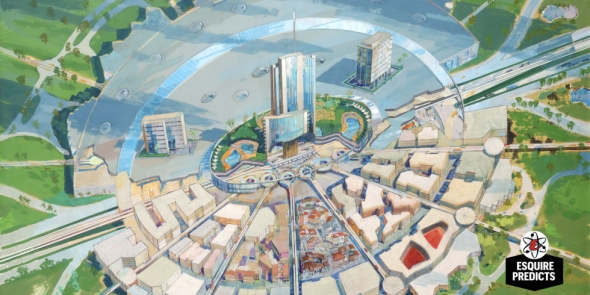
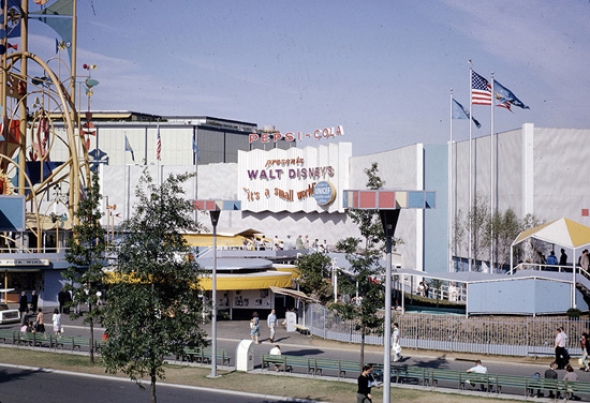
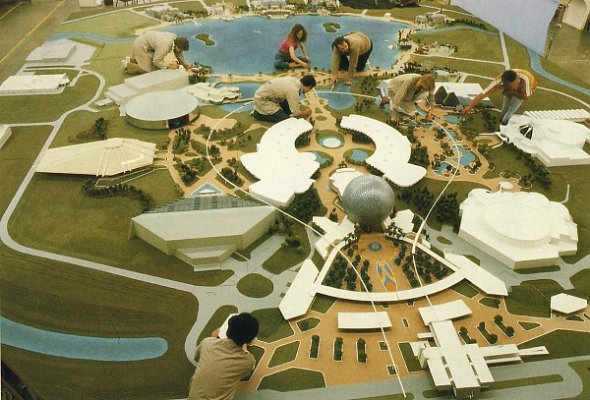

Comments
A common thesis/identity is much needed for EPCOT. I like the idea of an 'authentic' world showcase, and limited characters. Not sure I'm 100% with you on ALL OR NOTHING characters. A limited dose of the characters would be fine. But limited. As a teen in the 80's, I thrived on dark & educational adventures at EPCOT. Show the kids & adults the way, but leave room for their own imaginations by not getting distracted with too much kiddie stuff. And PLEASE, no more flavor-of-the-week celebrites hosting the rides. I like Ellen, but I hated the ride when she took over Energy. Killed it for me. Took away anything I might have gotten out of that ride. Nothing but a distraction.....possibly by design. The ride was becoming very dated.
Being drab and outdated is one thing...but more often than not, people long for rides/attractions that were replaced rather than updated. With the understanding that EPCOT is about "tomorrow" , retro-futurism seems just as important as futurism itself. EPCOT always seemed a more "mature" park...and with maturity comes an appreciation of the beauty and importance of the past as well as the future. A future world, as seen in the mid-60s, sounds absolutely beautiful. No reason you couldn't also have a world's fair type pavilion to showcase futuristic technologies as well.
I like the idea of using characters in Epcot. The rides that you guys propose for the characters they go pretty well; the idea of using Big Hero 6 to represent the Energy maybe this a good way to reinforced the values that those characters already represent. I think one of the movies that had a pretty strong theme is Wall-e and that it could work as part of the characters for Epcot. I just wanted also to congrats you guys in this amazing brainstorm, I found it interesting and enriching under a lot of aspects.
Will not happen any time soon as Disney just spent millions on Magic Kingdom and now are working on upgrades to AK and almost a total reboot of Studios. Little money left for any changes to Epcot any time soon. Plus Epcot still does well with attendance with it special events each year like Food and Wine Festival and the Flower and Garden show, so no need to make these changes now with people showing up anyway.
One of the reasons that Discover land didn't take place and Racers specifically was that, according to a comer on Imagineers, the current ride system for Spaceship Earth was an integral part of the building and couldn't be dismantled without damaging the building. This wasn't discovered until after the plans had leaked.